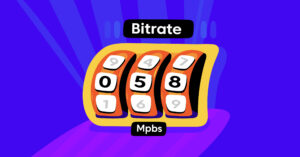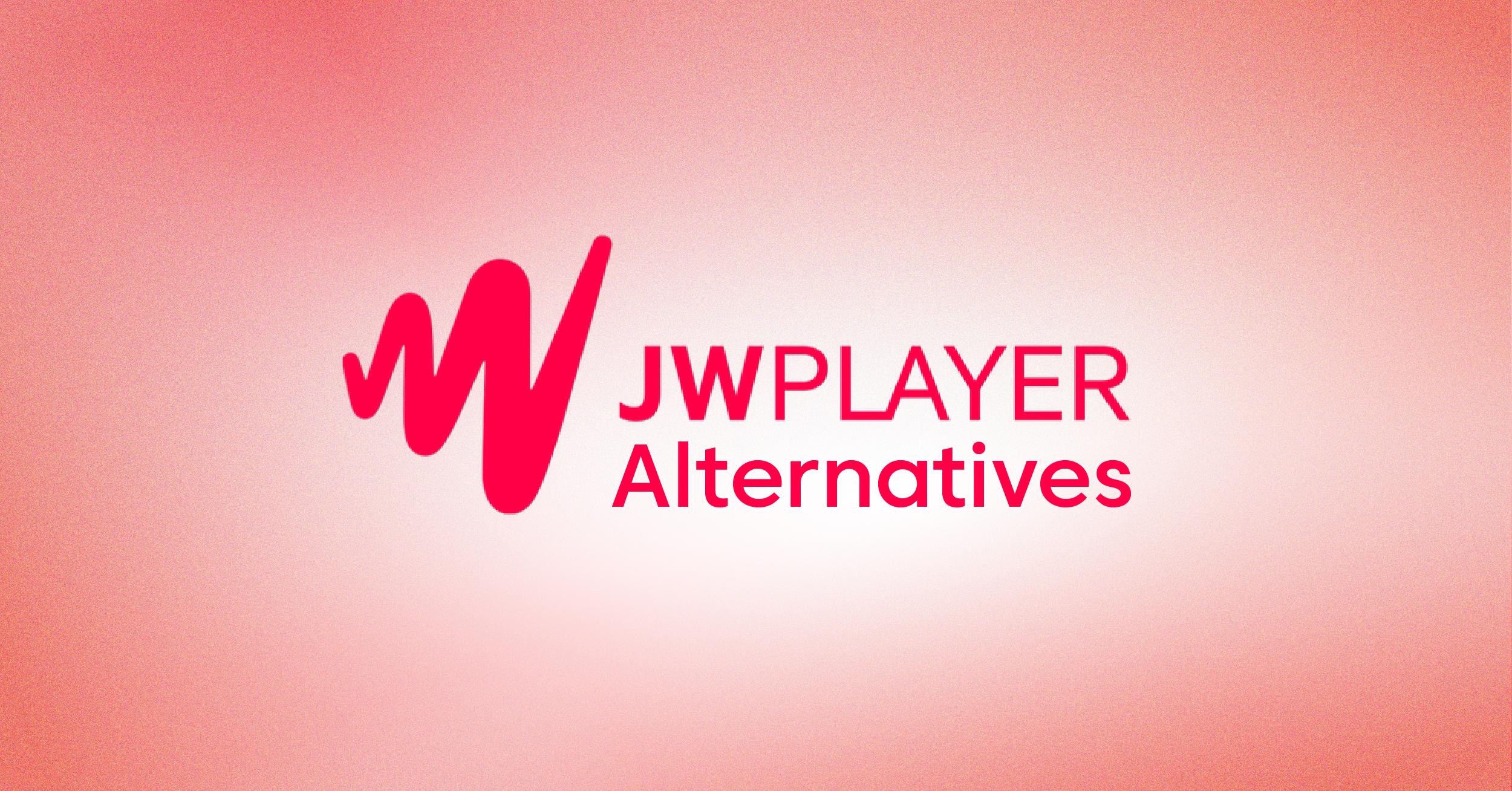Technology continues to reshape how we live, work, and entertain ourselves every day. The broadcasting and video industry has dramatically transformed over the past decade. You can now watch your favorite shows on Netflix during your daily commute. We have moved far beyond the era of scheduled TV programs and DVD rentals. This shift has introduced streaming media into our daily lives.
Streaming media is a technology that delivers audio and video content directly through the internet in real-time without downloading. Most streaming services like YouTube, Netflix, and Spotify have changed how we consume multimedia entertainment. If you look around, people stream content on various devices throughout their day. The popular method of accessing entertainment has shifted from traditional cable to online video platforms.
We must understand these technological advancements to make the most of digital entertainment. This blog will uncover the journey of streaming media, from its humble beginnings to current technologies. Let’s explore streaming media in-depth.
What is Streaming Media?
Streaming media is a technology that delivers digital audio and video content over the internet in real time. The term “streaming” originated from Data Electronics Inc.’s tape drives in the 1970s. These drives were designed to run continuously for entire tracks at a steady pace.
Today, streaming has evolved into a sophisticated method of transmitting multimedia content. It lets users watch or listen to content instantly without downloading files. Streaming media has become the popular method for accessing multimedia entertainment worldwide. You can find this technology in various forms, from live sports broadcasts to on-demand movies. The common types of streaming are:
- Videos
- Music
- Podcasts
We can access streaming content through different platforms and devices. Most streaming services now offer both audio and video options for immediate consumption. This instant access has revolutionized how we experience digital entertainment.
History of Streaming Media
The journey of streaming media began in the mid-20th century with early computer display experiments.
Early Development
The first significant breakthrough came in 1969 when Grumman acquired advanced telemetry ground stations. This technology allowed computers to process and display media files in real time. The Navy enhanced this technology in 1973 with real-time telemetry systems. In 1990, Kalpana introduced the first commercial Ethernet switch, enabling video streaming solutions.
Pioneering Live Streams
The band Severe Tire Damage made history with the first live Internet performance. This groundbreaking event took place on June 24, 1993. RealNetworks achieved another milestone in 1995 by broadcasting a baseball game online. The Seattle Symphony followed with the first online symphonic concert that year.
Business Evolution
Several companies shaped the streaming landscape during the 1990s and early 2000s. StarWorks introduced on-demand MPEG-1 videos in 1992, revolutionizing media delivery. Microsoft joined the race in 1995 with ActiveMovie, while Apple launched QuickTime 4 in 1999.
The Streaming Wars
Competition intensified in the late 2010s as major platforms entered the market. Netflix, Disney+, and Amazon Prime Video began competing for viewer attention. The COVID-19 pandemic accelerated streaming adoption, leading to unprecedented subscription growth.
Public Adoption
Streaming media reached new heights in 2023 with 4 trillion music streams globally. The technology became more accessible as internet speeds improved worldwide. Social media platforms integrated streaming features, expanding its reach further.
The DVD Decline
Traditional DVD services faced challenges as streaming platforms gained popularity. Netflix maintained its DVD service until 2015 when it had 5.3 million subscribers. RedBox announced its closure in July 2024, marking the end of an era.
Music Streaming Revolution
Napster disrupted the music industry in 1999 with its peer-to-peer sharing network. Modern platforms like Spotify have transformed music into a subscription-based service. By 2019, Spotify had attracted over 207 million users worldwide.
Pandemic Impact
The COVID-19 pandemic dramatically increased streaming media consumption in 2020. While digital streaming grew, the music industry faced challenges from canceled live events.
How Streaming Media Works
Streaming media operates through a complex system of data transmission over the internet. Here’s a detailed breakdown of the technical process:
Data Transmission Process
The server breaks down media content into small data packets for transmission. These packets travel through different internet connections to reach your device. When you click play, your device receives and assembles these packets in sequence.
Buffering and Playback
Your device stores a few seconds of data in a temporary storage called a buffer. This buffer helps maintain smooth playback if your internet connection fluctuates. The streaming player will pause if the buffer empties until enough data arrives.
Network Requirements
A stable internet connection is essential for seamless streaming experiences. Most streaming services adjust video quality based on your network speed. If your connection drops, the player can switch to a lower quality to prevent interruption.
Streaming Protocols
Streaming services use specific protocols to deliver content efficiently. These protocols manage how data packets travel between the server and the end user. Popular protocols include RTMP, HLS, and DASH for reliable content delivery.
Server Architecture
Multiple servers work together to deliver content to millions of users simultaneously. Content delivery networks (CDNs) store copies of files in different locations. This distribution helps reduce network latency and improves streaming quality.
Data Compression
Streaming platforms compress media files to optimize data transmission. Modern codecs reduce file sizes while maintaining acceptable quality. This compression allows faster access and reduces bandwidth requirements.
Client-Side Processing
Your device’s streaming app handles the final steps of content delivery. It decodes the incoming data packets and displays the content. The app also manages user controls and tracks playback progress.
Quality Management
Streaming services use adaptive bitrate technology to maintain playback quality. The system monitors your connection and adjusts video quality accordingly. This adaptation ensures the best possible viewing experience.
The Common Streaming Technologies
Streaming media relies on various technical components working together seamlessly. Each element plays a significant role in delivering high-quality content to viewers worldwide.
Internet Bandwidth
Internet bandwidth is the amount of data that can travel through an internet connection per second. This fundamental component determines how smoothly streaming content reaches end users.

The streaming process relies heavily on consistent bandwidth availability. With higher bandwidth, your device can receive more data packets quickly. This speed allows streaming platforms to send high-quality video without interruption.
Bandwidth directly impacts the quality of your streaming experience. When bandwidth is limited, streaming services will:
- Reduce video quality automatically
- Increase buffer times
- Switch to lower bitrates
- Pause playback until more data arrives
You can improve streaming quality by:
- Upgrading your internet plan
- Using wired connections
- Limiting concurrent streams
- Closing background applications
Buffering
Buffering is a temporary storage process that loads portions of streaming content before playback begins. This streaming media technology ensures smooth playback by creating a data reserve.
Buffering occurs in two main types:
- Progressive buffering: Downloads content in sequential order
- Adaptive buffering: Adjusts buffer size based on network conditions
The buffering process stores incoming data packets in your device’s RAM. When you start streaming, the media player loads a few seconds of content into this buffer. If your internet connection slows down, the player uses this stored data to maintain playback.
Bitrate
Bitrate is the speed at which video or audio data is transmitted, measured in bits per second (bps). This technical element determines the quality and size of streaming content delivered to viewers.

Bitrate comes in two main types:
- Constant Bitrate (CBR): Maintains the same data rate throughout
- Variable Bitrate (VBR): Adjusts data rate based on content complexity
Bitrate directly affects streaming performance in several ways:
- Higher bitrates provide better quality
- Lower bitrates reduce buffering
- Excessive bitrates can cause lag
- Insufficient bitrates create pixelation
Codec
Codec is a technology that compresses and decompresses digital media files for efficient streaming transmission. This essential component combines an encoder to compress files and a decoder to restore them for playback.

Codecs come in two primary categories:
- Lossy codecs (H.264, H.265, VP9): Remove some data to achieve smaller file sizes
- Lossless codecs (FLAC, PCM): Preserve all original data quality
Popular video codecs in streaming include:
- H.264/AVC: The most widely used codec
- H.265/HEVC: Offers better compression than H.264
- VP9: Google’s open-source alternative
- AV1: Latest codec for high-efficiency streaming
Codecs significantly impact streaming performance by:
- Reducing file sizes for faster transmission
- Maintaining acceptable video quality
- Enabling efficient bandwidth usage
- Supporting different device capabilities
Latency
Latency is the delay between sending and receiving data during streaming media transmission. This technical element measures how long content travels from the video server to your screen.

The streaming process involves multiple latency points:
- Server processing time
- Network travel time
- Client-side decoding
- Display rendering time
Streaming Protocols
Streaming protocols are standardized rules that control how video data travels from servers to viewers’ devices. Protocols are categorized as UCP and UDP. These protocols ensure reliable and efficient content delivery across different networks and platforms.

Common streaming protocols include:
- WebRTC
- RTMP
- HLS
- DASH
- MPEG-DASH
- SRT
Content Delivery Network (CDN)
A CDN is a network of servers distributed across different geographical locations to deliver web content faster. This technology stores cached copies of streaming content closer to end users for quick access.

CDNs come in two main types:
- Push CDN: Content is uploaded manually to CDN servers
- Pull CDN: Content is automatically fetched from origin servers when requested
The CDN process works through these steps:
- Users request streaming content
- The CDN redirects to the nearest server
- Content is delivered from the closest location
- Real-time performance monitoring adjusts delivery
Media Player
A media player is a software application that decodes and displays streaming content on your device. This essential component serves as the interface between streaming services and viewers.
Modern streaming media players include these key features:
- Adaptive quality control
- Multiple codec support
- Custom playback speeds
- Subtitle integration
- Playlist management
- Buffer adjustment options
Video Server
A video server is a specialized computer system that stores and delivers video content to viewers through streaming networks. This dedicated hardware manages multiple video streams simultaneously while maintaining quality and performance.
Video servers come in two main types:
- Origin servers: Store the original video content and serve as primary sources
- Edge servers: Cache and distribute content from origin servers to end users
Streaming Software
Streaming software is a specialized application that manages the encoding, broadcasting, and distribution of live or on-demand video content. This essential technology bridges the gap between content creators and their streaming platforms.
Castr is an all-in-one video streaming solution that simplifies the entire streaming process. This platform offers:
- Multi-destination streaming (Multistreaming)
- Live video hosting
- Video-on-demand services
- Professional broadcasting tools
- Cloud-based video management
- Adaptive bitrate
- Subsecond latency
The impact of streaming software on content delivery includes:
- Real-time encoding optimization
- Quality monitoring and adjustment
- Stream health management
- Audience engagement features
- Analytics and performance tracking
Popular Streaming Platforms
| # | Platform Name | Subscribers (Worldwide) |
|---|---|---|
| 1 | Netflix | 301,630,000 |
| 2 | Amazon Prime | 200,000,000 |
| 3 | Disney+ | 122,700,000 |
| 4 | Tencent Video | 116,000,000 |
| 5 | iQIYI | 101,100,000 |
| 6 | HBO Max | 100,000,000 |
| 7 | Paramount+ | 72,000,000 |
| 8 | Hulu | 52,000,000 |
| 9 | Eros Now | 39,900,000 |
| 10 | Peacock | 36,000,000 |
| 11 | Hotstar | 35,900,000 |
| 12 | SonyLiv | 33,300,000 |
| 13 | Apple | 30,000,000 |
| 14 | ESPN | 25,600,000 |
| 15 | CuriosityStream | 25,000,000 |
| 16 | DAZN | 20,000,000 |
| 17 | Starz | 15,900,000 |
| 18 | Crunchyroll | 15,000,000 |
| 19 | Viu | 13,400,000 |
| 20 | MUBI | 12,000,000 |
| 21 | AMC+ | 11,600,000 |
| 22 | JioCinema | 10,000,000 |
| 23 | KinoPoisk | 9,800,000 |
| 24 | Globoplay | 8,000,000 |
| 25 | Vix | 7,000,000 |
(Source: https://flixpatrol.com/streaming-services/subscribers/)
How to Start Streaming
Starting your streaming journey requires careful planning and the right setup. You can begin streaming by following these essential steps that will help you create quality content.
Equipment Setup
You will need reliable equipment to start streaming content online. A basic streaming setup includes a computer, camera, microphone, and stable internet connection. Your computer should meet the minimum requirements for streaming software. If you plan to stream games, your PC needs additional processing power and graphics capabilities. A high-quality webcam or DSLR camera will ensure clear video output. You should also invest in a good microphone to deliver clear audio to your viewers.
Internet Requirements
Your internet connection plays a crucial role in streaming quality. You need an upload speed of at least 5 Mbps for HD streaming. A wired ethernet connection offers more stability than Wi-Fi. If possible, get a dedicated internet line for streaming to avoid bandwidth issues. You should also test your connection speed regularly to maintain stream quality.
Software Selection
The right streaming software will help you manage your broadcasts effectively. Castr offers user-friendly features with advanced streaming technologies. You must configure your software settings according to your internet speed and hardware capabilities. Start with lower-quality settings and adjust them as you become comfortable with the platform.
Streaming Platform Choice
You need to choose a streaming platform that matches your content type. Twitch focuses on gaming content and creative streams. YouTube offers broader content categories and better discoverability. Facebook Gaming provides easy access to existing social networks. Each platform has different requirements and features for streamers. Using Castr’s multistreaming feature, you can stream on multiple platforms simultaneously.
Content Planning
Your content strategy will determine your streaming success. You should decide on your niche and target audience. Create a consistent streaming schedule that works for you. Plan your content themes and topics. You can use social media to promote your streams and build an audience.
These steps will help you start your streaming journey with confidence. Remember to test your setup before going live and adjust based on viewer feedback.
What Are the Challenges in Streaming Media?
Streaming media faces several technical and operational challenges affecting providers and users. Let’s explore the main obstacles in the streaming industry and their potential solutions.
Quality of Service
Maintaining consistent streaming quality is a complex challenge for service providers. Network congestion can lead to sudden quality drops and buffering issues. Your streaming experience might suffer during peak hours when many users are online. Service providers must balance video quality with bandwidth efficiency. They can address these issues through better compression technologies and distributed server networks.
Content Rights and Licensing
Streaming platforms must navigate complex licensing agreements and content rights. Different regions have varying restrictions on what content can be streamed. You might notice that some shows are available in one country but not in another. Content providers need to secure rights across multiple territories. This challenge leads to geo-blocking and limited content availability in certain regions.
Security Concerns
Protecting streaming content from piracy and unauthorized access is crucial. Hackers constantly develop new methods to bypass security measures. Your streaming service must implement robust encryption and DRM systems. Content providers lose significant revenue due to illegal streaming and sharing. They can enhance security through advanced authentication methods and watermarking technology.
Technical Infrastructure
Building and maintaining streaming infrastructure requires substantial resources. Servers must handle millions of concurrent streams without failing. Your service needs redundant systems to prevent outages during peak times. The cost of upgrading and maintaining this infrastructure is considerable. Providers can use cloud services and CDNs to distribute the load effectively.
These challenges continue to shape the streaming industry’s evolution. However, new technologies and solutions emerge regularly to address these issues.
Streaming Trends and Its Future
The streaming industry continues to evolve with new technologies and viewer preferences. We can observe several key trends shaping the future of digital entertainment. Netflix and other platforms are investing heavily in original content production. You will find more exclusive shows and movies on different streaming services.
AI and Machine Learning: AI and machine learning now power content recommendations across major platforms. These systems analyze your viewing habits to suggest relevant shows and movies. The platforms use this data to create personalized viewing experiences for each user. We can expect more advanced AI integration in content delivery and user experience. A
Social streaming: It has become popular among younger audiences. Platforms like Twitch and YouTube Gaming allow real-time interaction between creators and viewers. You can join live chat discussions while watching your favorite streamers. This trend has created new opportunities for content creators and advertisers.
5G Networks: The future of streaming media looks promising with emerging technologies. 5G networks will enable faster and more reliable streaming experiences. We expect to see more interactive content and virtual reality integration. You might soon watch sports events from multiple camera angles in real time.
Cloud gaming: These services will merge with traditional streaming platforms. This integration will create new entertainment possibilities for users worldwide. The platforms will offer seamless transitions between watching and playing content. We anticipate more cross-platform compatibility and shared experiences.
Blockchain technology: It might revolutionize content rights management. This change could help creators monetize their content more effectively. You will likely see new payment models and subscription options emerge. The industry will focus on reducing piracy through advanced security measures.
8K streaming: 8K streaming and advanced compression technologies will become mainstream. These improvements will deliver ultra-high-quality content to compatible devices. We expect better bandwidth efficiency through new encoding standards. Your streaming experience will improve with reduced buffering and latency.
Edge computing: It will reduce latency in live-streaming applications. This technology brings content processing closer to end users. We anticipate better performance for live events and sports broadcasts. The viewing experience will become more immersive and responsive.
Start Your Streaming Journey With Castr
Castr is an all-in-one streaming solution that simplifies your broadcasting journey. It offers powerful features for both beginners and professional streamers. You can start streaming to multiple platforms with just a few clicks.
We understand that setting up a streaming workflow can be challenging. Castr removes these complexities with its user-friendly interface and robust features. You will find everything you need to deliver high-quality streams to your audience.
This platform includes essential features such as:
- Multi-destination streaming
- Sub-second latency delivery
- Adaptive bitrate streaming
- Professional broadcasting tools
- 24/7 technical support
- Cloud video hosting
You can rely on Castr’s global CDN network for smooth content delivery. The platform ensures your streams reach viewers worldwide without buffering issues. We provide detailed analytics to help you monitor your streaming performance.
If you want to monetize your content, Castr offers flexible options. You can set up pay-per-view events or subscription-based channels. The platform supports various payment gateways for secure transactions.
We invite you to experience Castr’s powerful features firsthand. You can start your free 7-day trial without any credit card requirements. This trial gives you full access to all premium features.
Try Castr today and transform your streaming experience!






